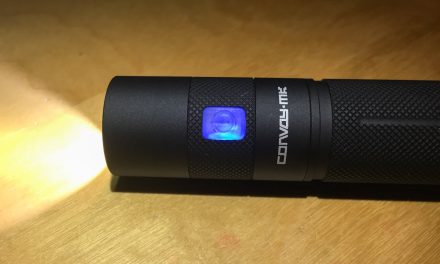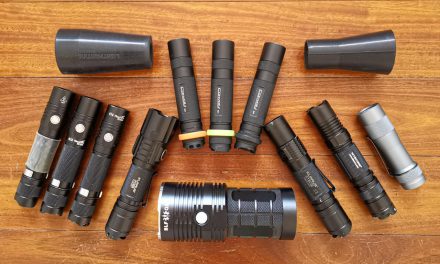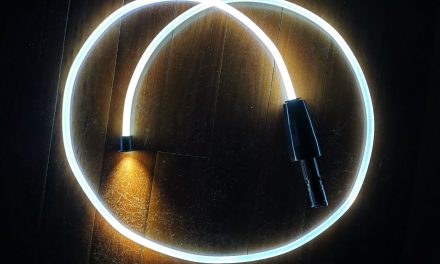
Flashlight Review: Light Excursion Deluxe LE (RGB) 2021

Light Excursion’s Deluxe RGB lights have proved very popular with light painting photographers, filling a gap in the market for a decent colour changing/fading flashlight. With competition on the horizon, Light Excursion has continued to make iterative changes to the product including RGB channel rotary dimmers, and USB charging. I have previously reviewed the Deluxe LP in 2019, and this review is of the 2021 Light Excursion Deluxe LE (18650 version).
Design and Construction
In response to poor options on the market, Frank Parhizgar (Light Excursion) started researching and developing Red, Green, Blue (RGB) colour mixing flashlights designed specifically for light painting photographer’s requirements. The Deluxe model has evolved rapidly over time based on feedback from light painters, and at the time of review includes the following features as standard:
– 18650 or 21700 Li-ion battery options
– RF remote control
– Red, Green, Blue (RGB) rotary channel dimmers
– Master on/off switch
– Momentary on/bypass switch
– Momentary switch
– Straight (LP) or threaded (LE) pipe connectors
– USB charging (cable included)
The lights are handmade from mainly off the shelf components in a plastic shell. The fact that it doesn’t resemble a traditional flashlight is good, as it allows for a better user interface for light painters.
The Deluxe has 2 connector options, LE and LP. The LE connector is grooved internally and allows for Light Painting Brushes tools to be screwed directly in (without the Universal Connector) for a solid connection. With a 31-34mm external diameter it also has a stable fit with the Light Painting Paradise Adaptors. The LE connector has smooth or pattern reflector options. The pattern reflector option creates a unique beam pattern. It is also possible to fit a Lightblades KYO to the outside of the LE connector (not tested).
The LP connector has a 28mm external diameter which allows for connectivity with the Light Painting Brushes Universal Connector, Light Painting Paradise Adapters, and Light Painting Tubes. It only comes with a smooth reflector option, and will input slightly more light into light painting tools than the LE options (based on photographic exposures used in photos using the 2019 Deluxe LP model).
The battery compartment is waterproof, and needs a screw-driver to remove the screws for access. There are 2 battery options – a 18650 (BYO) or “Tesla” 21700 (battery included). The 18650 battery compartment is a good fit for unprotected 18650s, but longer protected 18650s (>68mm) may be a very tight fit. I did not have any battery connection issues which I have experienced with some previous Light Excursion lights. Due to the high cut-off voltage for RF remote connectivity, I would recommend using high capacity and high current unprotected 18650s, of which my recommendations are the 3500mAh Panasonic NCR18650GA, LG MJ1, Molicell M35A, or Samsung 35E batteries. For the 21700 version shipped in North America, a high quality 4000-4500mAh LG battery is included (LG, Molicell, and Samsung are the most recommended brands for 21700s).
The Deluxe has USB charging, with a USB-A connector at the power source end, and a co-axial connection at the light end. The charging indicator glows red when charging, and blue when charging has terminated. The charge terminated at 4.17V which is good.
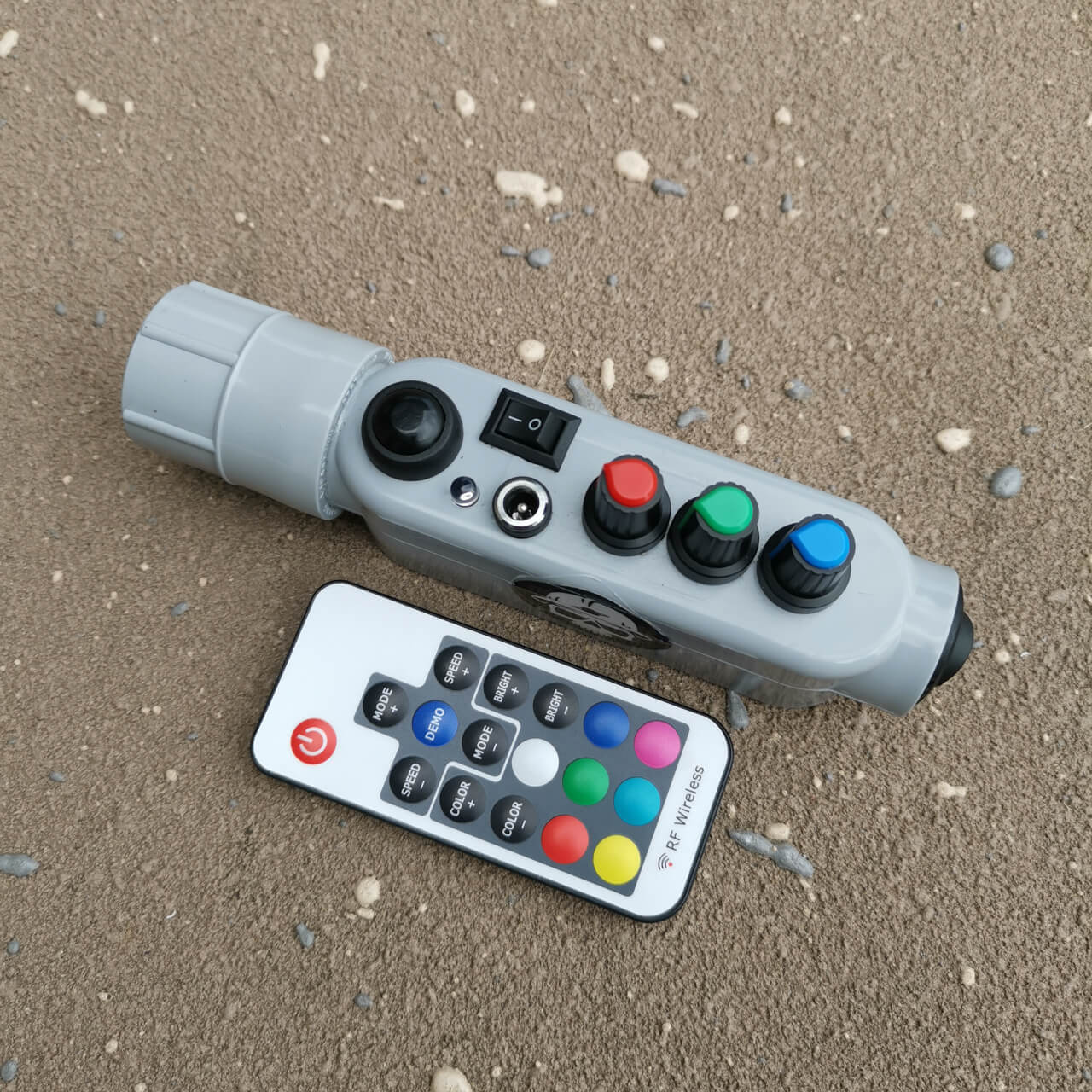
Light Excursion Deluxe LE (RGB)
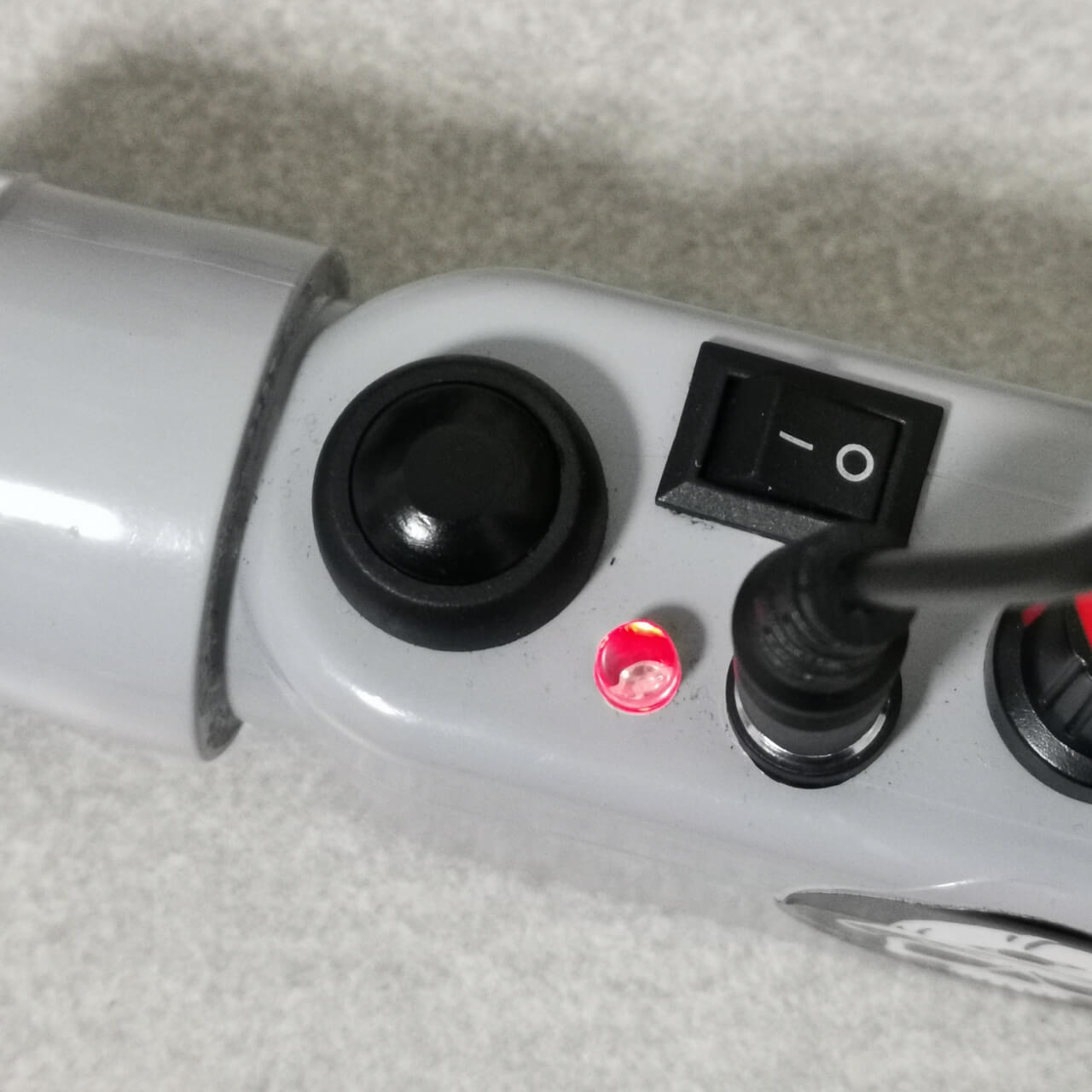
The Deluxe has a charging port and indicator light.
User Interface
The Light Excursion Deluxe light had a myriad of controls. There is a master on/off switch on the rear of the Deluxe. Turning this on or off will start the selected colour chase from the same point, which is useful for consistency, as long as the remote is within 3m range. There is also a momentary/temporary button, and on/bypass switch. Momentary switches allow for more control of the light being on and off, and are a very useful feature for light drawing. When the momentary switch is used, the light turns at at wherever the light chase is at the time (it is still running in the background). It is also possible to change colour chase using the remote when the momentary switch is off, useful for changing effects mid-scene without walking out of the scene as long as you know how many Mode +/- presses you need.
A standard feature of the Deluxe since 2020 has been rotary dimmers for the Red, Green, and Blue channels. However, the dimming is not linear, and is more of practical use at the lower end of the brightness range (such as in conjunction with astro photography). The rotary dials also do not lock into the 100% on position, so it is very easy to accidentally knock them out of position, and I found that I had to always check they were at 100% before each light painting.
The Deluxe uses a fairly generic RF remote control for an “industry standard” range of light chases. These include 2 rainbow colour fade modes, RGB pulse, rainbow pulse, 7 different single colour pulse modes, 7 different colour strobe modes, RGB strobe, RGB chase, and 7 colour chase. There are 10 speed levels (though only the 3 fastest are useful for light painting), and 8 brightness levels. There is no ability to program the RF remote version of this light, but these effects should keep most light painters occupied for a long time. I have not experienced parasitic drain of the remote control CR2025 battery in Light Excursion lights. Note that button batteries should always be kept out of reach of children.
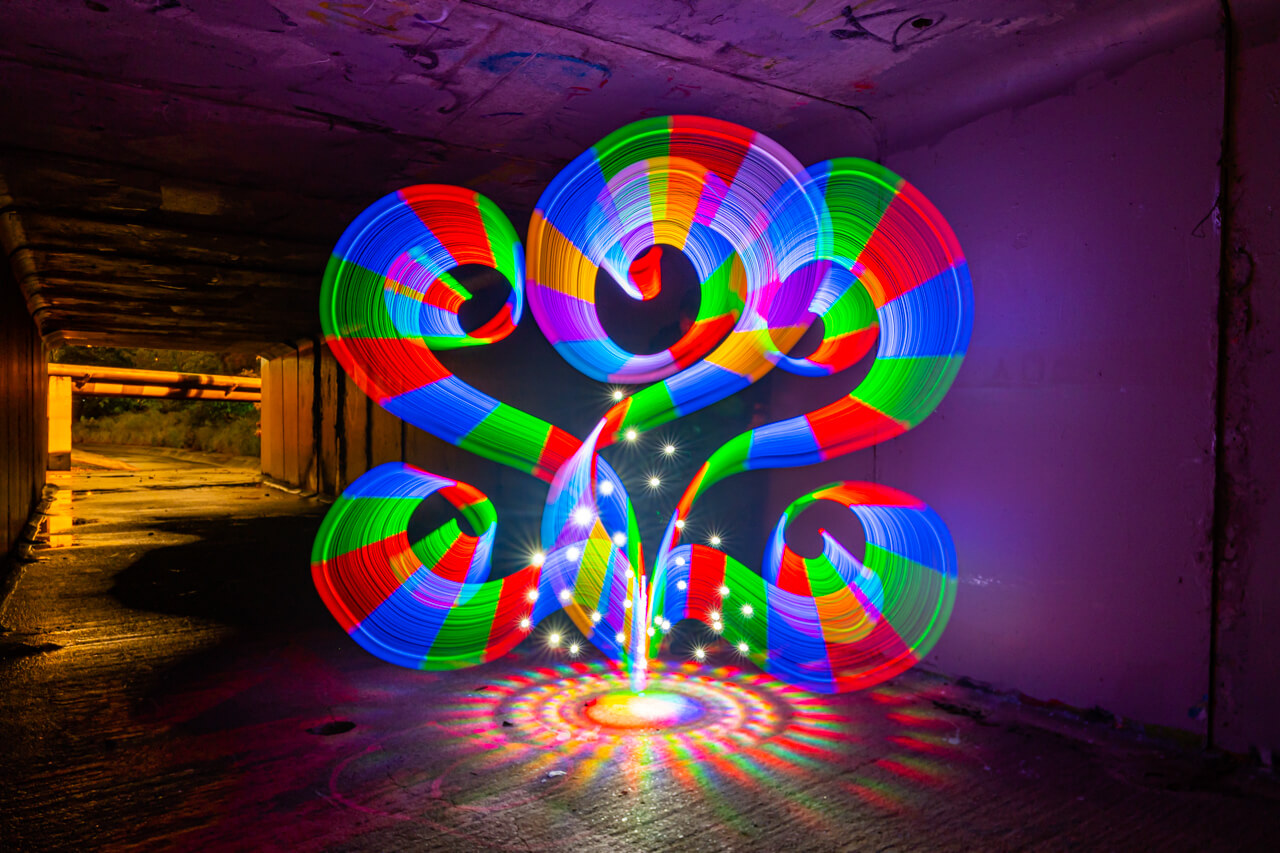
It is easy to change between colour chases mid-scene.
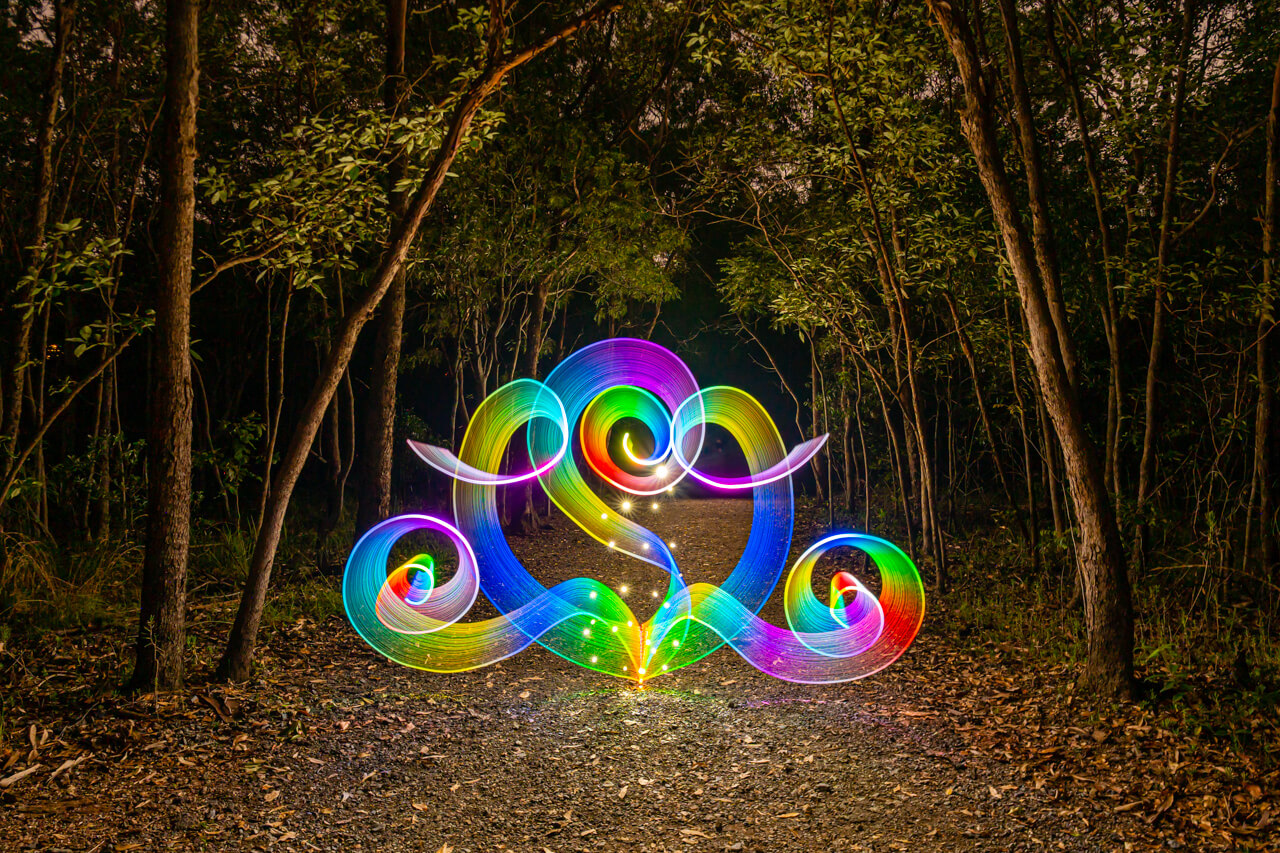
By using the Master on/off switch the light trails can start at the same point in the colour chase.
Output and Beam
It is not possible to directly compare colour lumens with white light lumens, so I prefer to describe in terms of photographic exposures. In colour fade mode, I get a perfect exposure with LPB Plexiglass Unicorn at f/8, ISO200 and LPP Plexi Rod at f/5.6, ISO250. This is similar to the Ignis Color LED Torch, and approx. 2 photographic stops brighter than the Concentrate C5 and Colorshine Torch. It will require approx. 2 more photographic stops compared to typical 1000+ lumen white light flashlights, and is thus best used away from ambient light such as street lights.
The lens and pattern reflector combination tested results in most of those lumens being projected in a relatively narrow beam (good for light painting tools), and the rest being used in the spectacular and unique beam pattern. Based on photos from my previous review of the Deluxe LP, it needs to be noted that the LP version has more light entering light painting tools – approx. 1/2 a photographic stop. The colour mixing isn’t really good enough for smooth illumination purposes, but that isn’t the purpose of this light. The colour mixing is good in light painting tools which is the main purpose of this light.
The output of the Deluxe stayed relatively stable throughout it’s 140 minute continuous run-time (in rainbow fade mode), which is better than all other colour-changing lights I’ve tested that reduce in brightness with decreasing battery voltage. Whilst the light output is still going strong at 140 minutes (which is a decent runtime), the connectivity with the RF remote was lost at that point. With the li-ion battery measuring 3.97V when remote connectivity was lost, there was still 66% of the battery charge remaining. Thus I would advise charging up the battery shortly before a light painting session.
Pulse Width Modulation (PWM) is a method by which colour-changing lights reduce the brightness of the colour channels by very quickly switching the light output on and off. This creates a very fast strobe effect in the light trail. This is more noticeable the closer the light trail is to the camera, and the faster that the light source is moving. The Deluxe thankfully has faster PWM than all other colour changing lights that I’ve tested so far (aside from the Concentrate C5 when its colours are static), which creates more solid looking light trails.
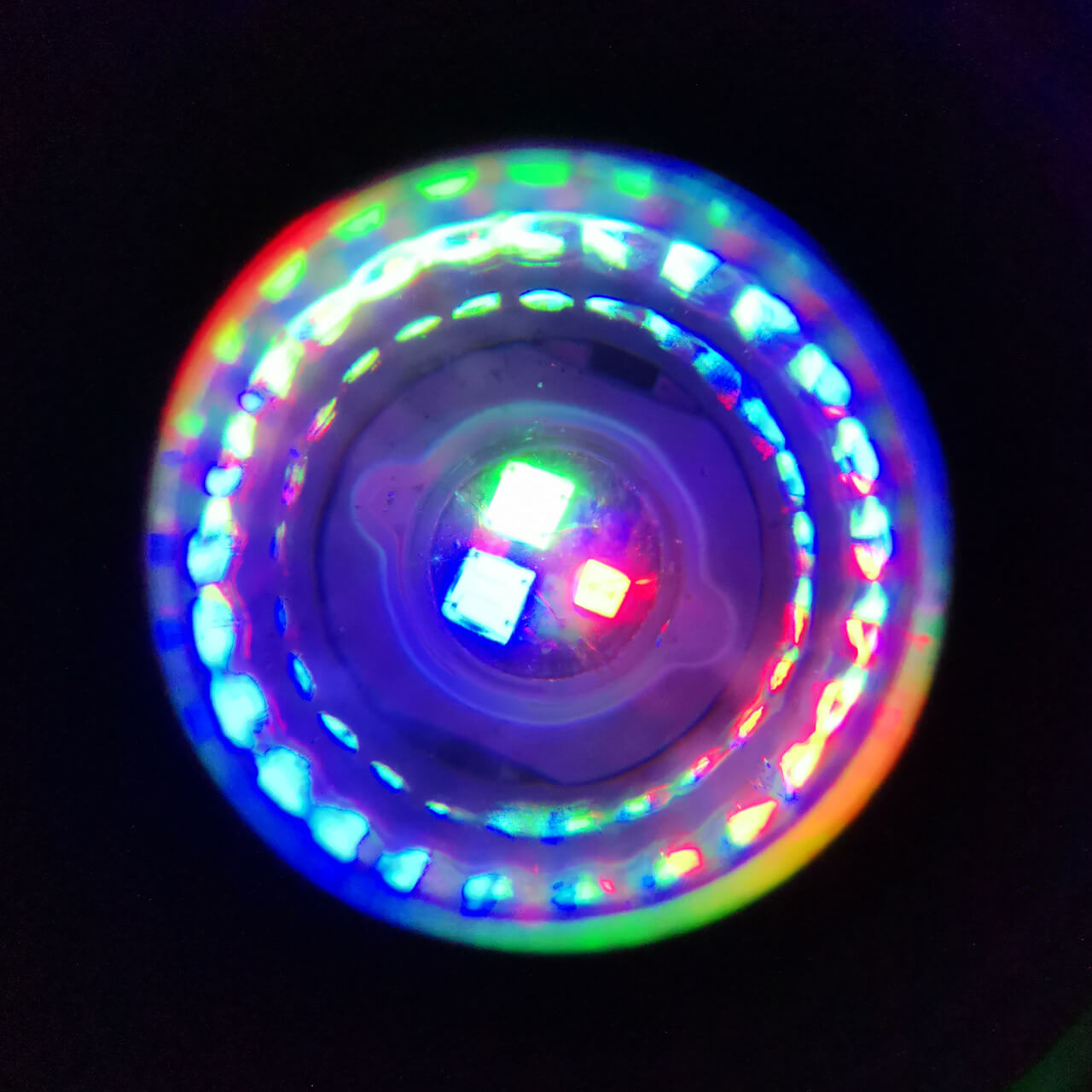
The Deluxe has 3 separate Red, Green, and Blue LEDs.
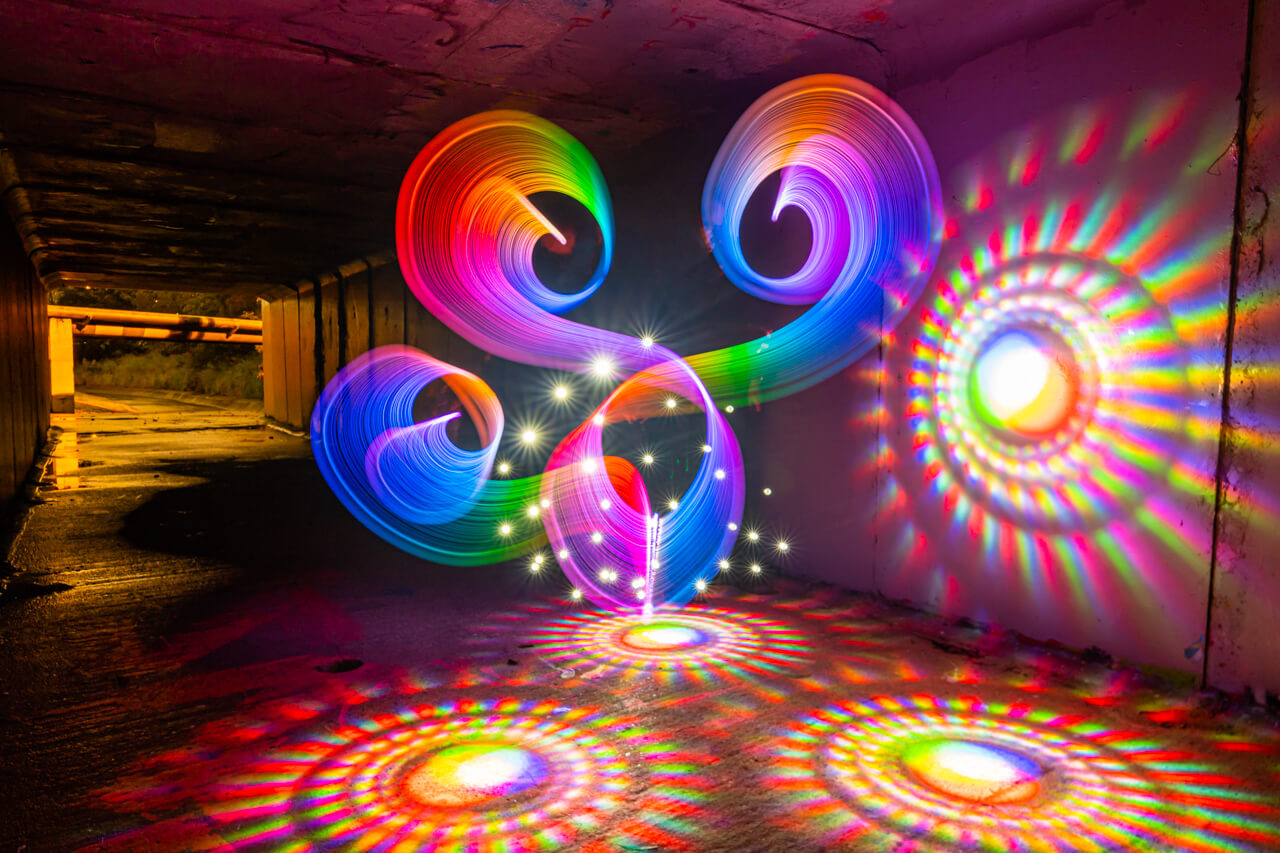
The Deluxe LE with Pattern reflector can create a spectacular beam pattern.
Conclusion
Things I liked:
– Well designed user interface for light painting purposes.
– Good brightness for RGB colour mixing flashlights.
– Industry standard range of colour/light chases including rainbow colour fades.
– Momentary/temporary switch.
– USB charging.
– Less noticeable PWM than most other colour changing flashlights.
– Spectacular and unique beam pattern (with Pattern reflector).
– Good customer service (via messaging on FB or IG).
Things I didn’t like:
– Rotary dimmers can be easily knocked out of 100% position.
Whilst the Deluxe isn’t cheap, the user interface is specifically designed for light painters, and a good range of colour chases will keep light painters occupied for some time. At the time of writing, the Light Excursion Deluxe is still the best colour fading/changing light available for light painting photographers creating light trails, and is highly recommended. If you want the maximum amount of light entering light painting tools then I would recommend the LP option. If you would like the spectacular beam pattern and more stable connectivity with light painting tools, and decent brightness for an colour changing light, then go for the LE with Pattern reflector option. Light Excursion has many options for the Deluxe model, plus other impressive colour changing lights such as the Double Dragon, Godzilla, and Cobra.
Light Excursion flashlights can be purchased by messaging Frank on either Facebook or Instagram.
More photos taken with this light are on my Instagram.











